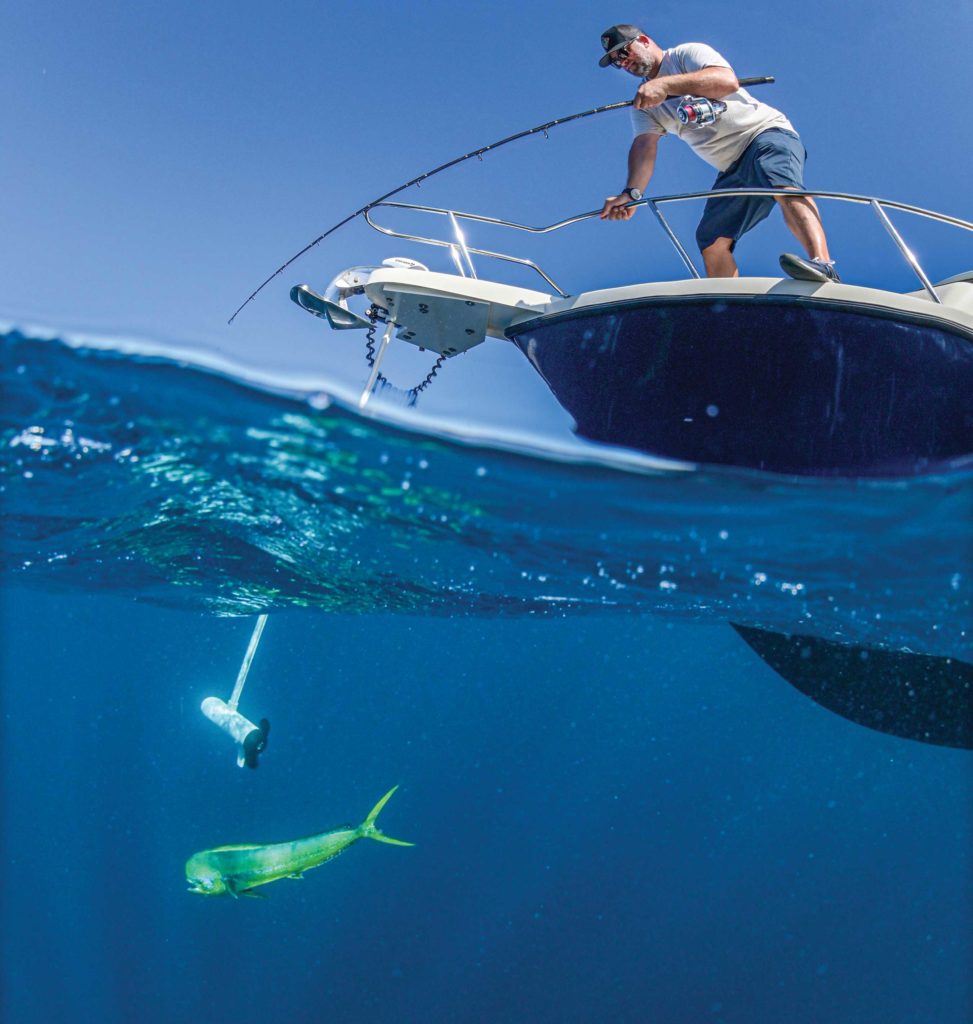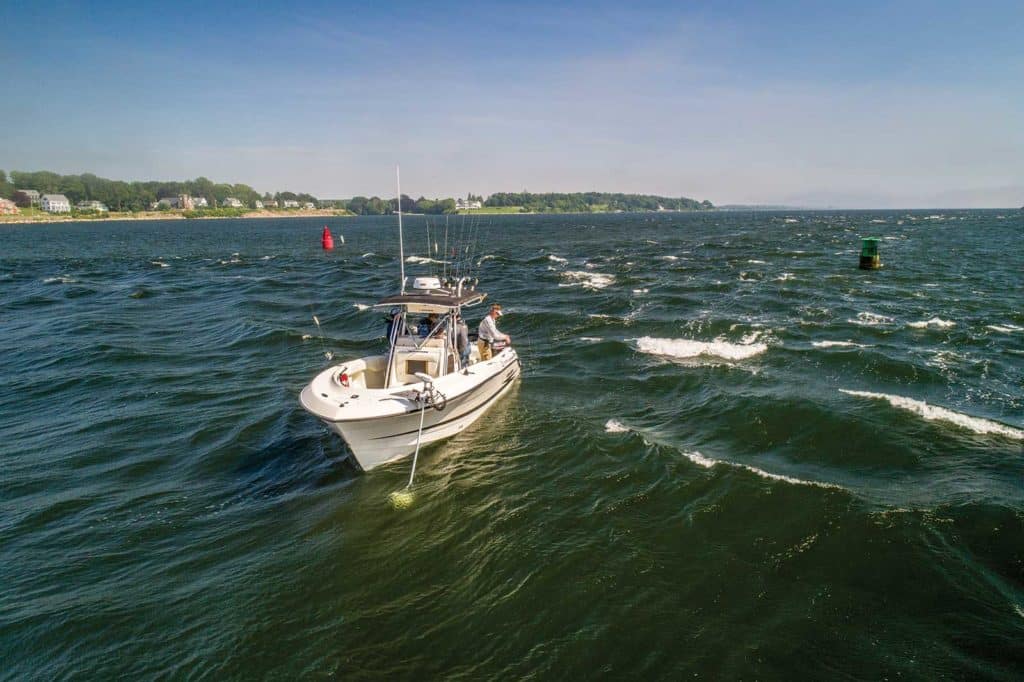
Whether born of angler envy or simple supply-and-demand economics, the use of electric trolling motors has expanded offshore. Within the last few years, Rhodan Marine and Minn Kota have rolled out models with 84-, 87- and even 96-inch shafts to use on boats in the 40-foot range, with bows towering more than 6 feet above the waterline.
Finally, offshore and nearshore anglers can enjoy pinpoint, GPS-guided boat control and the ability to hover quietly over a fishing spot—until recently, available for inshore fishing boats mostly—at a lower price tag than outboard-engine control systems such as Yamaha’s Helm Master.
“The other day, I counted 20 boats with trolling motors up here,” says Rhode Island captain B.J. Silvia, who runs a Parker 25 sporting a 112-pound thrust Minn Kota Terrova with an 87-inch shaft. “It’s good for every type of fishing, like when you don’t want to drive over fish you’re casting into, or if I need a stealthy approach while live-baiting. Even to throw plugs into rocky areas, I now go up to the rocks with the trolling motor.”
Silvia also uses his Minn Kota to speed up or slow down the drift, adjusting the throttle as needed. And if he wants to hover, he engages the Terrova Spot-Lock feature. It enables him to settle above a specific fishing spot to let his anglers fish vertically, which often proves essential for finicky species such as tautog.
Capt. Jason Stock charters his Yellowfin 26 out of Bradenton, Florida, and frequently uses his 120-pound thrust Rhodan trolling motor, equipped with a whopping 8-foot shaft. “That 96-inch shaft drops the propeller 4 to 5 feet below the surface, so it will hold my 26-foot boat, even when it’s rough. Of course, in rough conditions the motor does work harder.”
Stock says the Rhodan helps him with time management. He doesn’t have to invest 20 minutes or more on anchoring, and possibly resetting, every time he stops to bottomfish. “I can pull up on a spot and hold over it to check out the bottom. If fish are not biting, I move on to the next location,” he explains, adding that he can also disengage the trolling motor quickly and crank the outboards to chase a big fish. When conditions offshore become too rough, he can choose to simply anchor or troll.
Because longer shafts flex and bend a good bit more than shorter ones, these offshore trolling motors inherently stay engaged, running more often to keep boats locked in position whenever seas build. “If you have a day when the wind and current push hard in the same direction, you use more battery life,” Silvia says. “That being said, I really only had three or four days last year when the motor didn’t last the entire day on a charge.”

Where you install the motor can also make a difference in how hard it works, Silvia adds. Because his Parker features a bowsprit, his trolling motor is mounted slightly off-center. Placing it as close to the centerline as possible, however, has improved its performance, he claims.
The Minn Kota motor with an 87-inch shaft delivers 112 pounds of thrust and draws a maximum of 52 amps. The 84- and 96-inch Rhodan motors produce 120 pounds of thrust and draw a max of 42 amps. Amp draw measures how hard a machine must work to run, and the higher the amp draw, the faster it drains the batteries.
These big trolling motors operate off a three-battery bank, delivering a total of 36 volts. Stock uses an onboard Stealth charger that recharges his trolling-motor batteries when he cranks up his outboard engines to move from spot to spot. Such chargers—also called automatic charging relays and offered by other brands such as Minn Kota and Blue Sea Systems—sense the starting battery charge. When the outboards’ alternators top off that battery, the available charge moves to the trolling-motor bank.
Silvia says he uses shore power and a three-bank charger that he plugs in at the end of the day. He also says some fellow guides have switched to using lithium-ion batteries, which cost more but deliver both longer life and improved charging.
“For me, it’s a huge game changer,” Stock says. “I use it when I’m catching bait around bridges, when I’m tarpon fishing. I can set up and anchor with the GPS so the baits aren’t drifting.”









